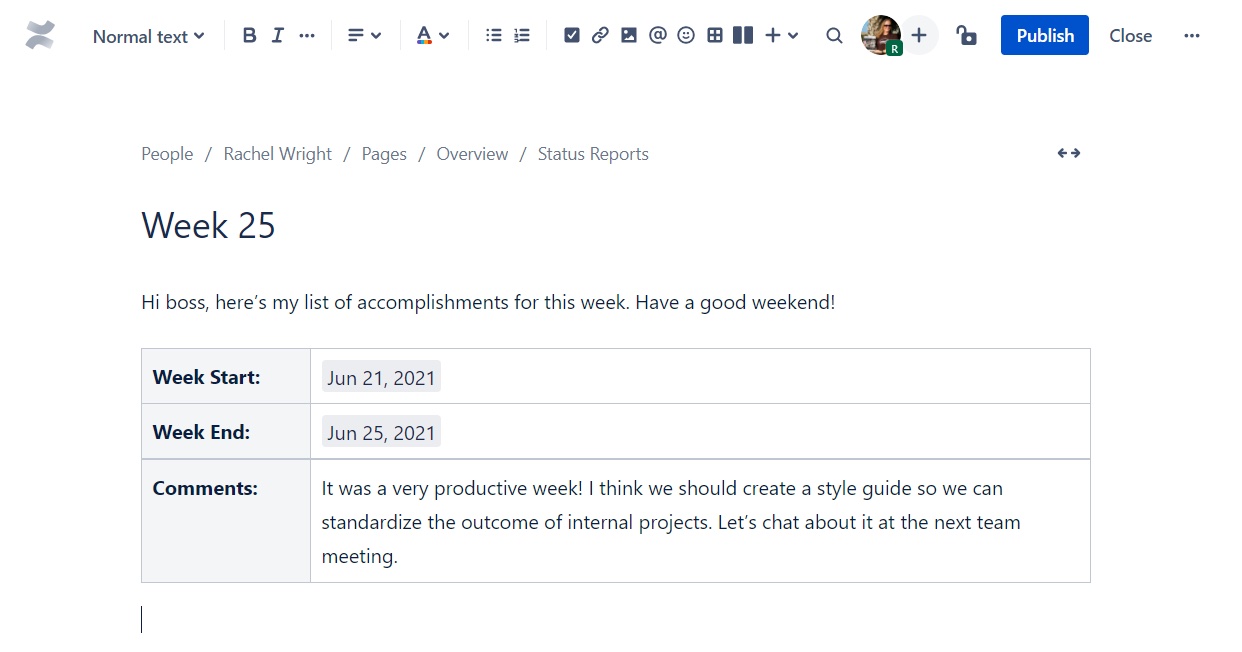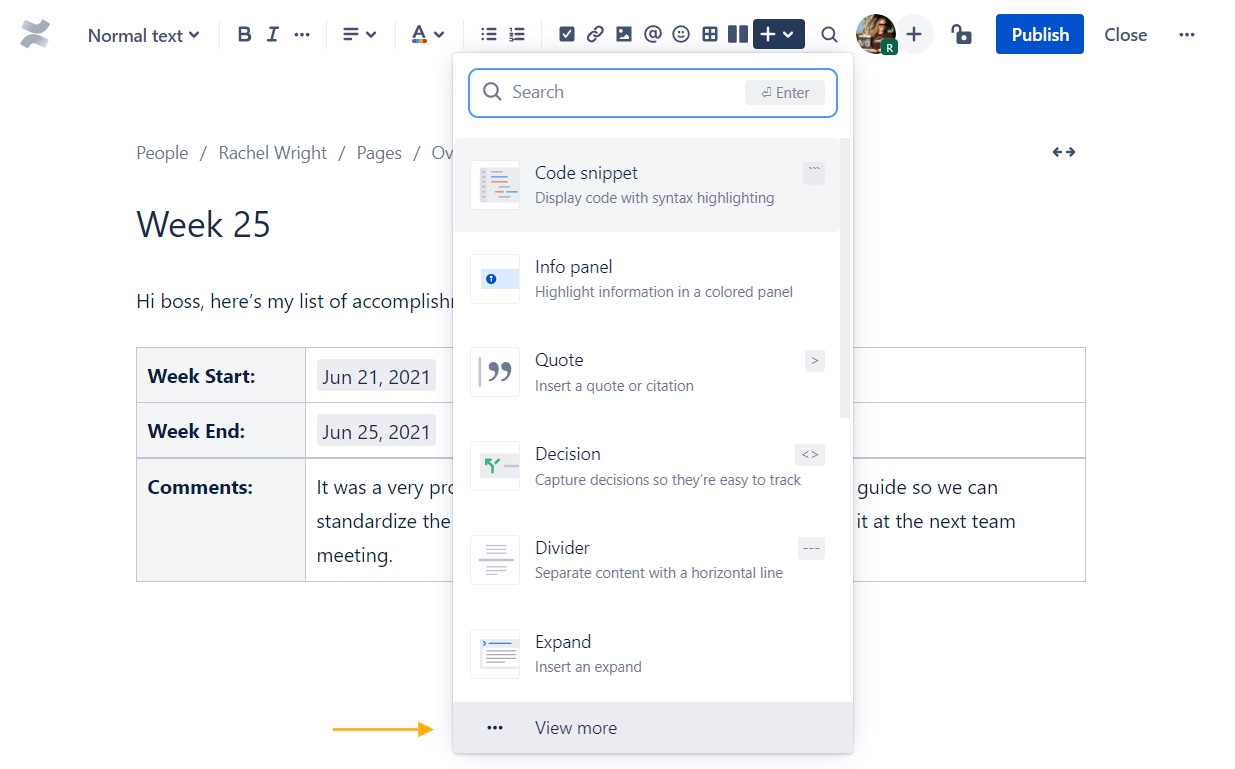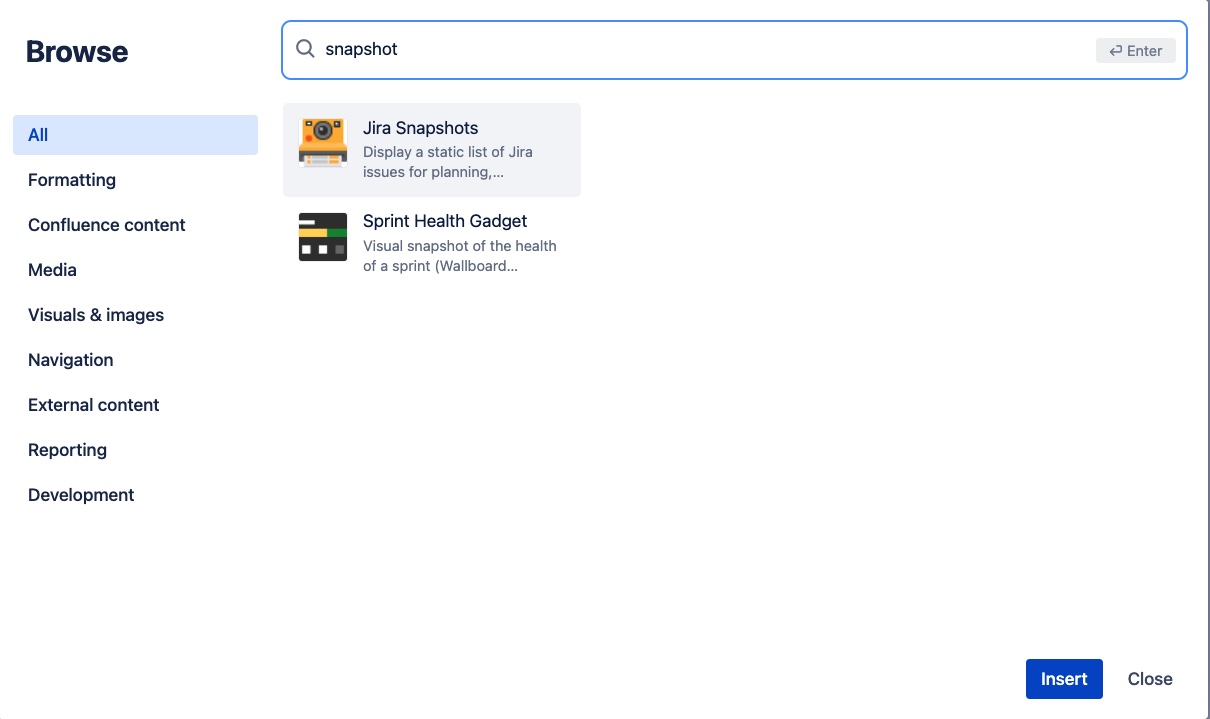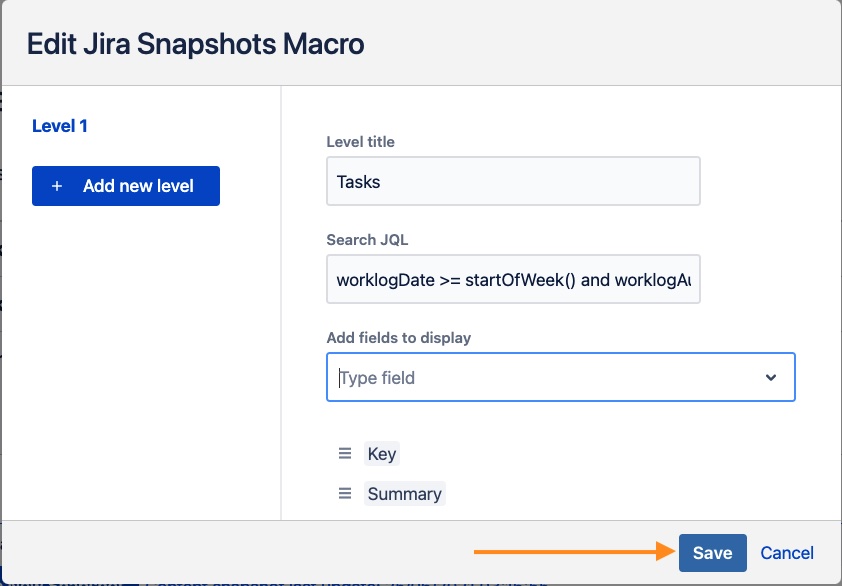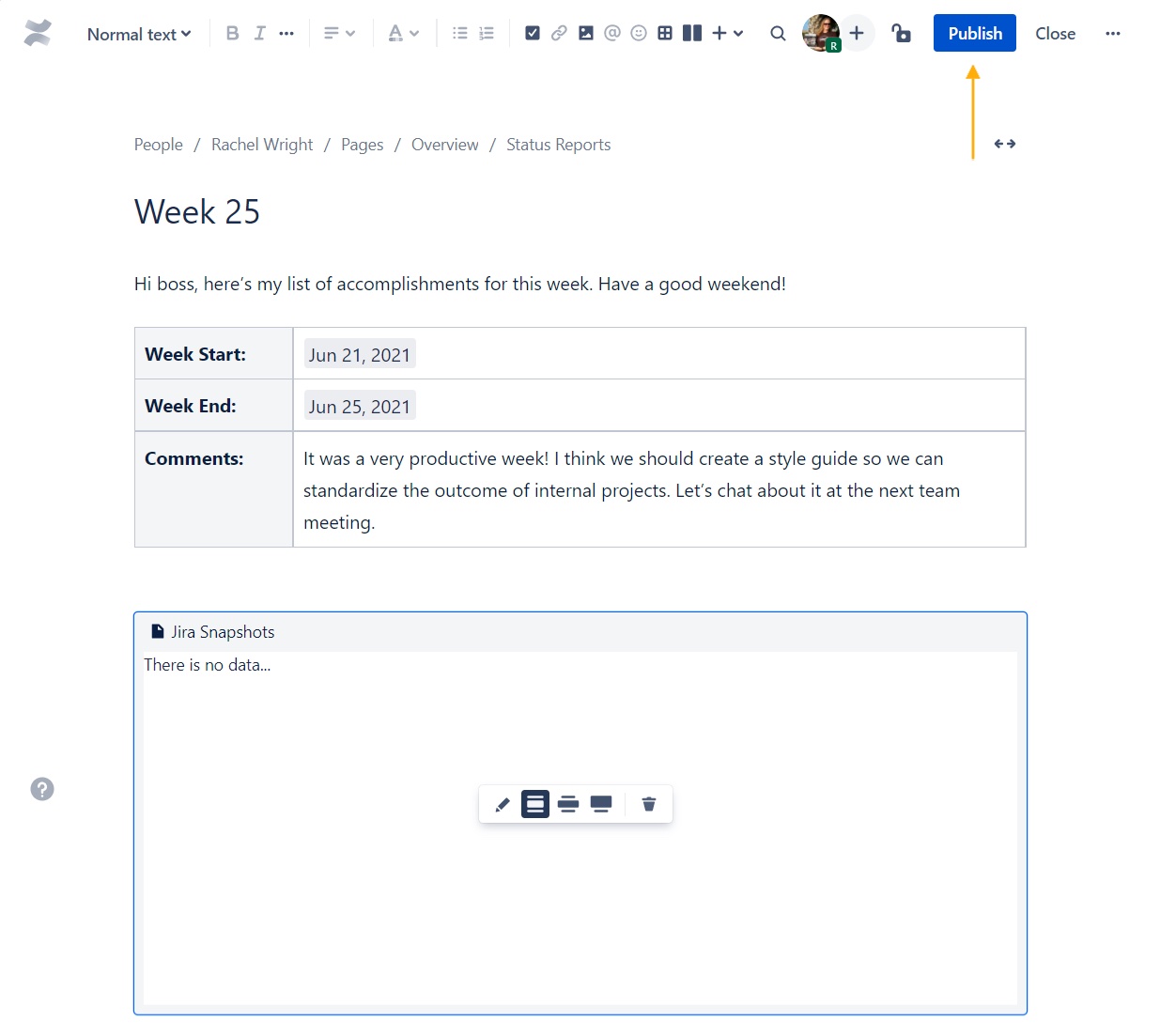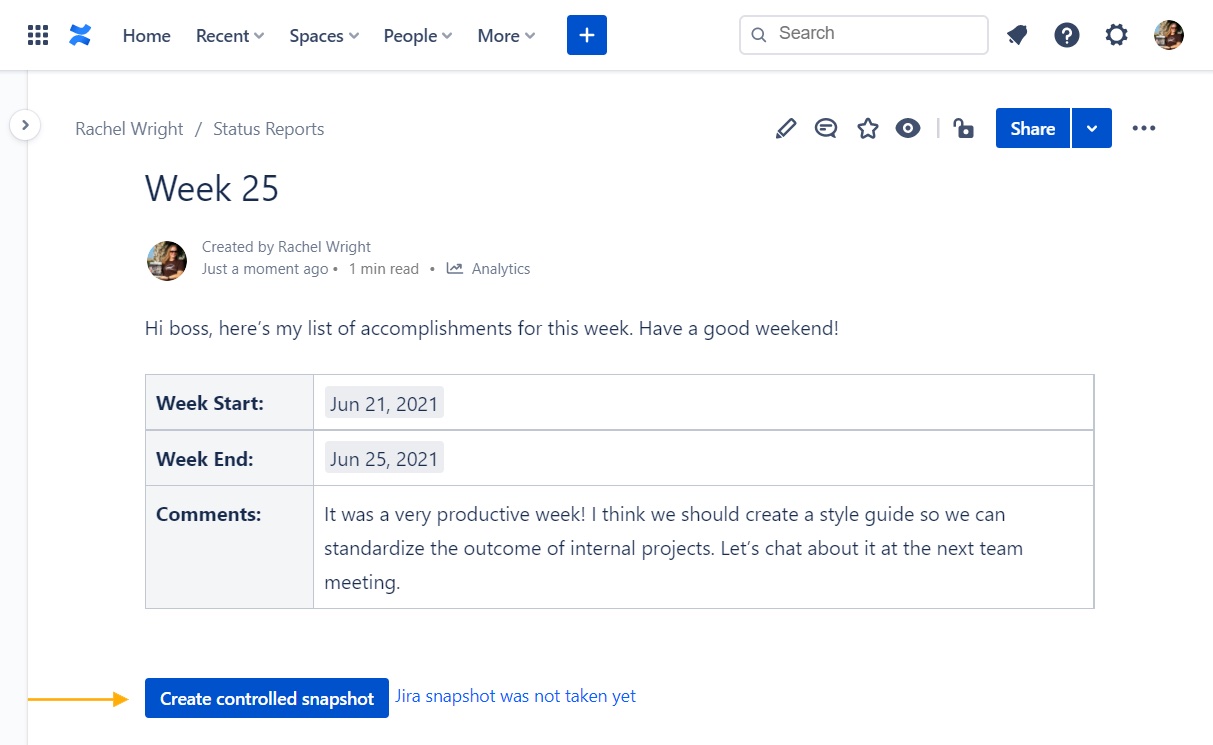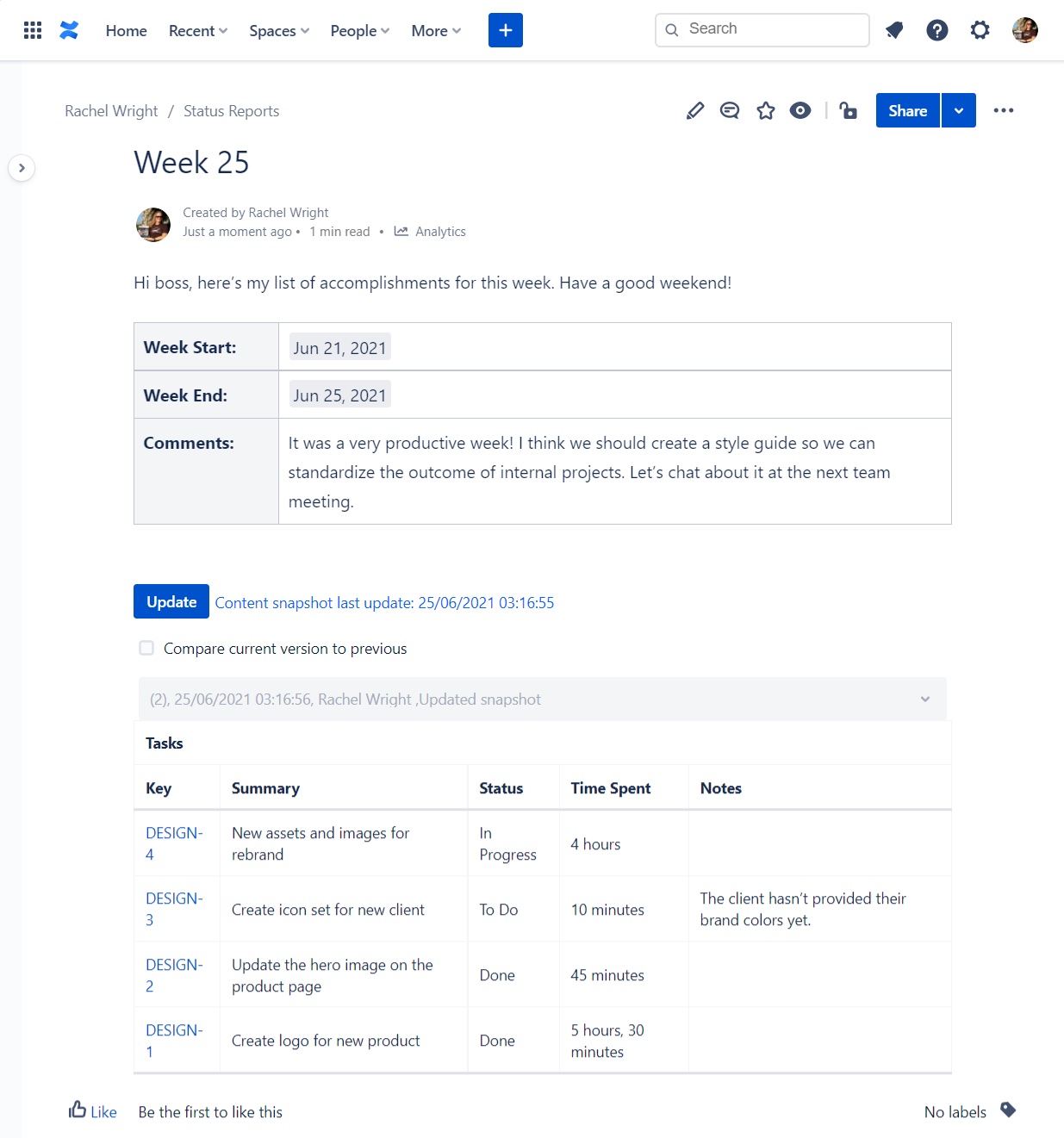| Widget Connector | ||||||||||
|---|---|---|---|---|---|---|---|---|---|---|
|
How to Do It:
Log in to Confluence, and create a new page for the status report.
In the top editor toolbar, click the “+” icon and select “View more” at the bottom of the menu.
In the overlay, select the “Jira Snapshots” macro. You can find this macro via the search box at the top right.
In the “Edit Jira Snapshots Macro” overlay:
Enter a title in the “Level title” field to represent the first level or “list” of Jira issues.
Enter a query in the “Search JQL” field to limit the scope of issues. For example, select only issues for which you have a logged time during the last week
Code Block worklogDate >= startOfWeek() and worklogAuthor = 557057:c0f3ae55-……
557057:c0f3ae55-…… stands for your user unique ID in Jira. (see more here )
In the “Add fields to display” field, select the list of desired fields.
 You can display most Jira standard and custom fields.
You can display most Jira standard and custom fields. They are added to a list, where you can reorder the fields.
They are added to a list, where you can reorder the fields.
Click the “Save” button at the lower right, to complete the macro configuration.
Click the “Publish” button at the top right of the page.
Finally, click the “Create controlled snapshot” button, to generate a static list of issues.
The Finished Result:
Need to change the issue list or display different information? Simply edit the macro details, and click the “Update” button on the Confluence page to take a new snapshot.
Now that there’s a trackable history of actions over time, your boss can see exactly what was done, and you can get an early start to your weekend!
| Tip | ||
|---|---|---|
Tips
|

